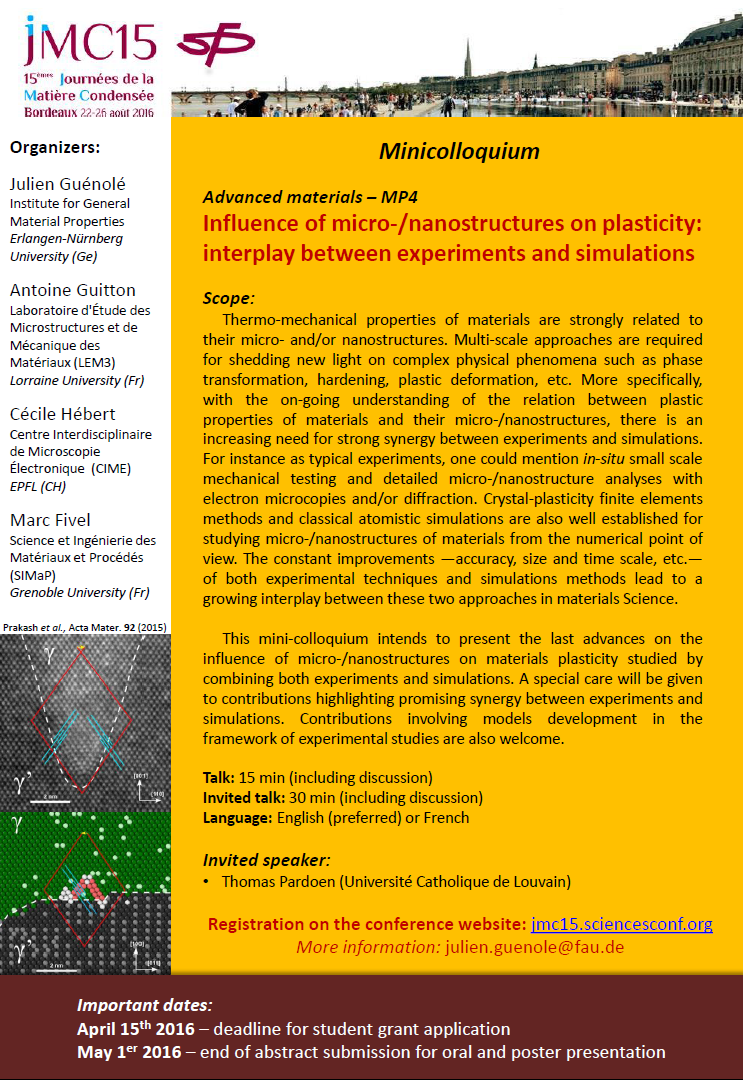Latest news of the group
Uncategorised
Plasticity in complex crystals
Basal Slip in Laves Phases: the Synchroshear Dislocation
Two different mechanisms have been reported in previous ab initio studies to describe basal slip in complex intermetallic Laves phases: synchroshear and undulating slip. To date, no clear answer has been given on which is the energetically favourable mechanism and whether either of them could effectively propagate as a dislocation. Using classical atomistic simulations supported by ab initio calculations, we remove the ambiguity and shows that the two mechanisms are, in fact, identical. Furthermore, we establish synchroshear as the mechanism for propagating dislocations within the basal plane in Laves phases.
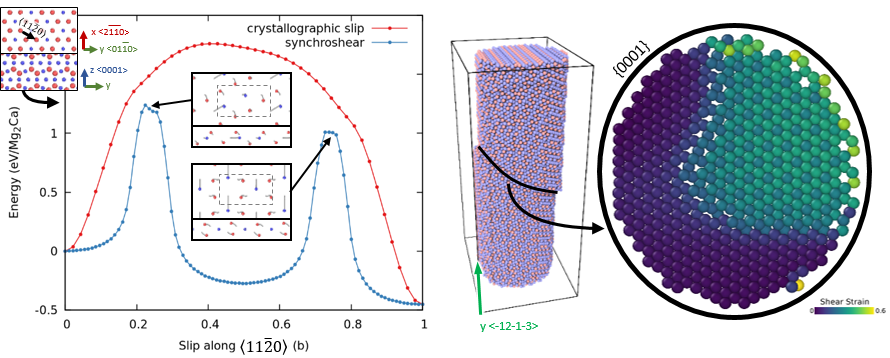
Fig. 1: Minimum energy path of the crystallographic shear and synchrosher in C14 Mg2Ca bulk Lave phase. Dislocation propagation in a C14 Mg2Ca nano-pillar by synchroshear mechanism.
[From Guénolé et al., Scripta Materialia, 2019][arXiv]
Basal Dislocations Interacting with Complex Precipitates in Mg Alloys
The mechanical properties of Mg-Al alloys are greatly influenced by the complex intermetallic phase Mg17Al12, which is the most dominant precipitate found in this alloy system. In this work, we perform atomistic studies of basal edge and 30 degrees dislocations interacting with Mg17Al12 precipitates of different sizes (D), shapes, orientations, and inter-precipitate spacing (L).
The present observations might be more generally relevant for dislocations interacting with semi- or incoherent precipitates.
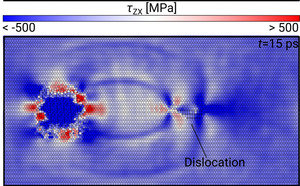
Fig. 2: Stress field of a dislocation at the Mg-Mg17Al12 interface and in the Mg matrix.
[From Vaid, Guénolé et al., Materialia, 2019][arXiv]
Slip transfer at interfaces
The long-standing research question of the plastic deformation of materials and components is intrinsically related to the propagation of slip across interfaces such as grain boundaries or phase boundaries. Despite intense work, current approaches do not provide a comprehensive overview of plasticity propagation, and mechanisms of slip transfer remain to date fundamentally unclear. We explored this question by investigating elementary mechanisms of slip transfer through grain-boundaries and phase-boundaries, by means of atomistic simulations based on semi-empirical potentials.
Slip transfer at grain-boundaries in aluminum
In order to anderstand the very basic physical origin of slip transfer at grain-boundaries (GB), we study the absorption of dislocations at high-angle GB. For example, we characterize the residual stress field after absorption.
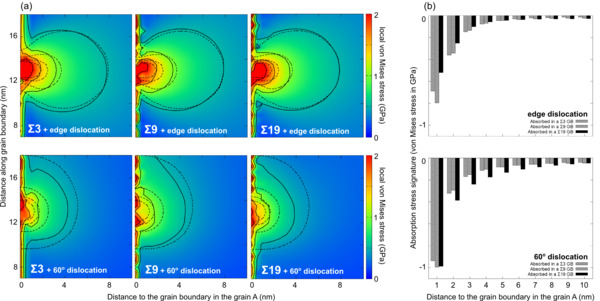 Fig. 1: (a) local von Mises stress distribution σvm obtained from the atomic stress and averaged over the whole dislocation line length, for an absorbed edge and 60o dislocation in the specified GB (solid iso-lines and color scale). The iso-lines are plotted every 500 MPa. The dashed iso-lines represent the corresponding dislocation in bulk. (b) absorption stress signature of an absorbed edge and 60o dislocation in GBs. [unpublished work]
Fig. 1: (a) local von Mises stress distribution σvm obtained from the atomic stress and averaged over the whole dislocation line length, for an absorbed edge and 60o dislocation in the specified GB (solid iso-lines and color scale). The iso-lines are plotted every 500 MPa. The dashed iso-lines represent the corresponding dislocation in bulk. (b) absorption stress signature of an absorbed edge and 60o dislocation in GBs. [unpublished work]
Elementary mechanisms for the slip transfer at GB are often studied with well defined planar GB. Here, we perform controlled studies of slip transfer at curved grain-boundaries in aluminum bi-crystals. In particular, we highlight the importance of the curvature in favoring dislocation transmission.
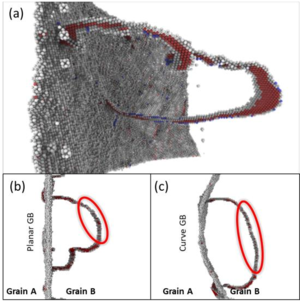
Fig. 2: Slip transfer at a curve grain boundary in aluminum. (a) perspective view of a transferred dislocation. Top views of the slip transferred across (b) planar and (c) curve grain boundary. [unpublished work]
Slip transfer at phase-boundaries in Nickel based superalloys
The interaction of dislocations with precipitates is an essential strengthening mechanism in metals, as exemplified by the superior high-temperature strength of Ni-base superalloys. Here we use atomistic simulation samples generated from atom probe tomography data of a single crystal superalloy to study the interactions of matrix dislocations with a gamma-prime precipitate in molecular dynamics simulations. It is shown that the precipitate morphology, in particular its local curvature, and the local chemical composition significantly alter both, the misfit dislocation network which forms at the precipitate interface, and the core structure of the misfit dislocations. Simulated tensile tests reveal the atomic scale details of many experimentally observed dislocation–precipitate interaction mechanisms, which cannot be reproduced by idealized simulation setups with planar interfaces. We thus demonstrate the need to include interface curvature in the study of semicoherent precipitates and introduce as an enabling method atom probe tomography-informed atomistic simulations.
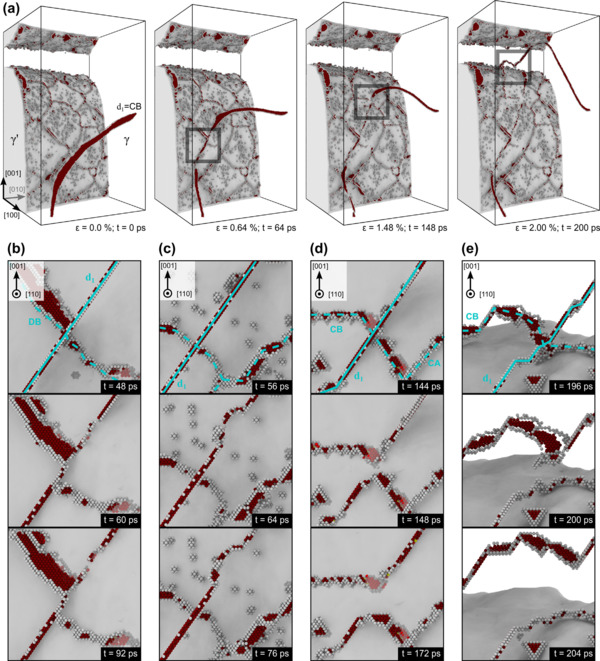
Fig. 3: Interaction of one 60° matrix dislocation with the misfit dislocation network in the APT-informed sample. (a) Deposition of dislocation segments at the interface during tensile loading. (b)–(d) Details of specific dislocation processes which are highlighted by gray rectangles in (a). (b) Intersection of an orthogonal misfit dislocation by the deposited dislocation. (c) Local climb of the dislocation by absorption of vacancies at the interface. (d) collinear reaction with a misfit dislocation of identical Burgers vector leaving a gap along the line of the deposited dislocation. (e) Knitting-out of a misfit dislocation by a dislocation. [From Prakash, Guénolé et al., Acta Mater. 92 (2015) 33-45]
Minicolloquium at the JMC15 (Bordeaux, August 2016)
The 15th Condensed Matter Days (JMC15) of the French Physical Society (SFP) will take place this year in Bordeaux, from the 22 to the 26 August. It is the largest physics conference in France and one of the largest in Europe, which is organized every two years: the previous editions gathered 800 attendees in Montpellier (2012) and 1000 attendees in Paris (2014). The JMC15 cover all domains of condensed matter physics.
In collaboration with Dr. A. Guitton (LEM3), Prof. C. Hébert (EPFL) and Dr. M. Fivel (SIMaP), we organize the minicolloquium "Influence of micro-/nanostructures on plasticity: interplay between experiments and simulations" on the synergies between experiments and simulations to improve our understanding of the plasticity in materials. More details on the flyer below or on the pdf.
Contact
Coming soon
Current laboratory
Current laboratory
LEM3 laboratory
(since 2020)
The laboratory of study of microstructures, mechanics and material sciences (In French: Laboratoire d'Étude des Microstructures et de Mécanique des Matériaux), also known as the LEM3, is a French laboratory of research located in Metz (F-57070). As an interdisciplinary research center, the LEM3 combines solid mechanics, metallurgy, materials science, chemistry and physics. The scientific excellence of the laboratory is acknowledged by internationally recognized researchers and the combined authority of the CNRS, the Université de Lorraine and the engineering school Arts et Métiers ParisTech. The LEM3 is part of the Carnot Institute ARTS and currently employs more than 150 persons.
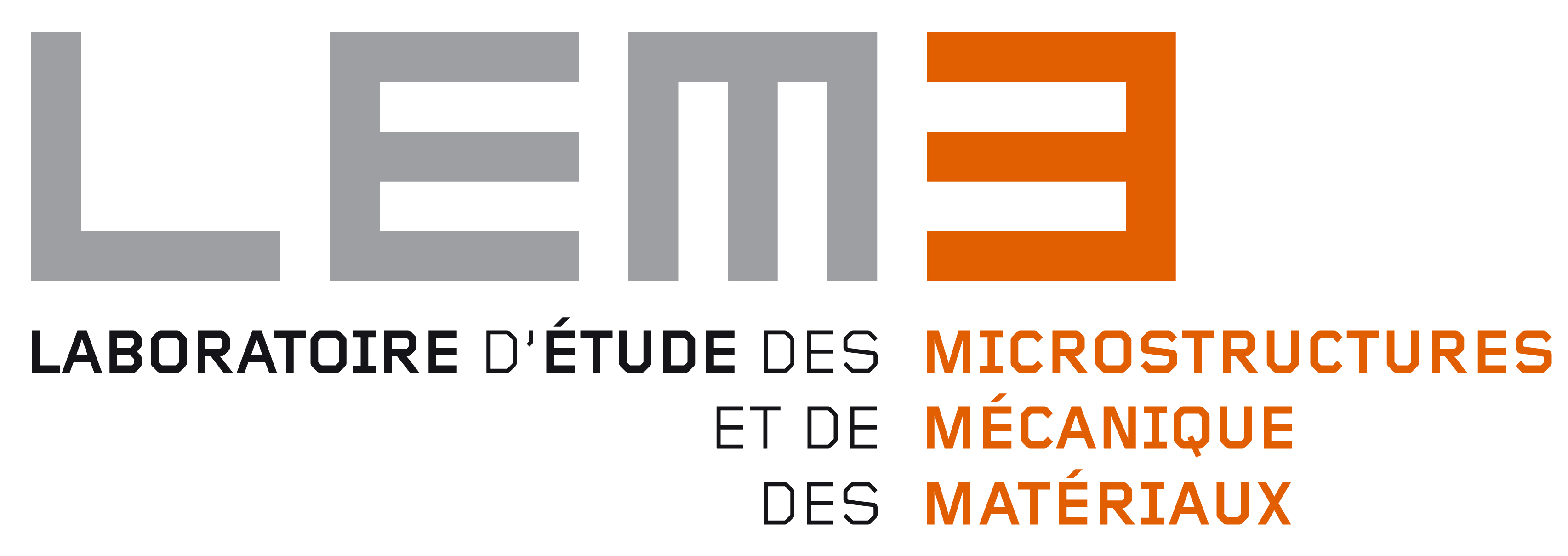 |
 |
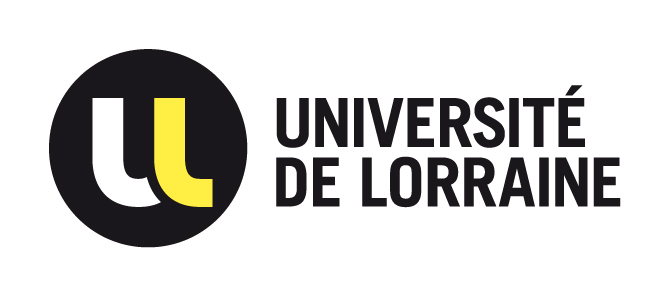 |
Previous laboratory
Institute of Physical Metallurgy and Materials Physics (IMM)
(2018-2019)
The Institute of Physical Metallurgy and Materials Physics (IMM) from the RWTH Aachen University, in Aachen (Aix-le-Chapelle) in Germany.
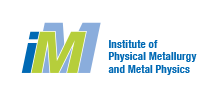 |
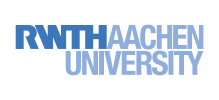 |
The IMM (Instute für Metallkunde und Materialphysic or Institute of Physical Metallurgy and Materials Physics) is headed by Prof. Dr. Sandra Korte-KerzelSandra Korte-Kerzel since the retirement of Prof. Dr. Günter Gottstein in 2013. The institute is focused on nano-mechanical testing (nanoindenter, tensile/compression tests) and characterization technics (X-Ray, SEM, SEM-FIB, TEM/HRTEM) to understand and improved mechanical behaviors of complexe materials. The laboratory has also strong capabilities in samples preparation (metling furnaces, single-/ bicrystals growth) and miscellenous heat treatments. [More information]
Institute I: General Materials Properties
(2013-2018)
The Institute I for General Materials Properties is part of the Department of Materials Science and Engineering of the Friedrich-Alexander-University Erlangen-Nürnberg.

The research topics of the institute for general materials properties are related with the mechanical properties of structural materials in a broad sense. Testing of the mechanical properties from the nanoscale to macroscopic properties is performed on all aspects including high temperature properties, fatigue, creep, friction and wear. Our research direction is focused on understanding the properties from a micro and nanostructural basis. Therefore microsopic techniques from electron microscopy and scanning probe microscopy to optical techniques are applied to evaluate the microstructural constitution of materials on all length scales. [More information]

Pprime Institute
(2008-2013)
The Pprime (P') Institute is a CNRS (French national center for scientific research) research center founded in 2010 in collaboration with ISAE-ENSMA and the University of Poitiers. Composed of more than 600 employees, the research focuses are the engineering sciences and materials physics. The institute is divided in three departments: Physics and Mechanics of Materials – Fluids, Thermal and Combustion Sciences – Mechanical Engineering and Complex Systems. [More information]
Julien GUÉNOLÉ, PhD
Current position
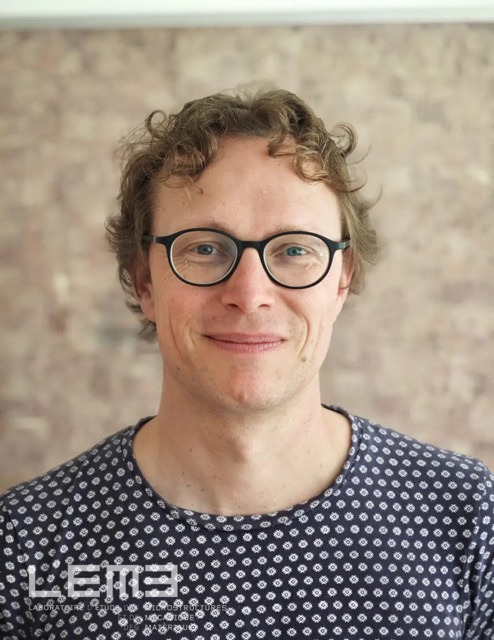
CNRS research scientist (chargé de recherche CNRS) at the LEM3 laboratory in Metz, France, affiliated to the Université de Lorraine.
Research experiences
| since 2020 | CNRS research scientist (chargé de recherche CNRS) Université de Lorraine, CNRS, Arts & Métiers, LEM3, Metz, France Atomistic simulation of lighweight materials mechanics, Plasiticity and Discrete to Continuum Crossover. |
| 2018 – 2019 | Research Group Leader – atomistic simulation group Institute of Physical Metallurgy and Materials Physics (IMM) – Univ.-Prof. Dr. Sandra Korte-Kerzel RWTH Aachen University, Germany Topics: Plasticity in Complex intermetallics, Slip transfer at interfaces, Magnesium alloy, Mechanics of nano-objects, Focused ion beam irradiation damage. |
| 2014 – 2017 |
PostDoc in Materials Science institut 1 for General Materials Properties – Prof. Dr. M. Göken, Prof. Dr.-Ing. Bitzek Friedrich-Alexander-University (FAU) of Erlangen-Nürnberg, Germany Topics: Anisotropic Glasses, Mechanics of nano-objects, Irradiation Induced Damage by Focused Ion Beam, Fracture in Metals, Dislocation-Interface Interactions in Metals and Superalloys. |
| 2013 – |
PostDoc in Materials Science Institut 8 of Materials Simulation – Prof. Dr. M. Zaiser and Dr. K. E. Aifantis Friedrich-Alexander-University (FAU) of Erlangen-Nürnberg, Germany Topic: Dislocation-Grain Boundary Interactions in Metals |
| 2013 – | Teaching and research Assistant Pprime Institute, University of Poitiers – CNRS – ISAE-ENSMA, France Topic: Dislocations-Grain boundaries interaction |
| 2019 – 2012 |
Ph.D. in Materials Science Pprime Institute, University of Poitiers – CNRS – ISAE-ENSMA, France Subject: Atomistic simulations of the mechanical properties of the silicon nanowires Supervisors: Prof. S. Brochard and Dr. J. Godet |
List of publications.
List of communications.
Unique identifier: Scopus (36570318300), ORCID (0000-0002-3288-8951) and ResearcherID (B-5932-2016).
Responsibilities
| 2025 – now | Associate Editor at Philosophical Magazine (Publisher: Taylor & Francis). |
| 2024 – now | Elected member of the LEM3 laboratory council. |
| 2024 – now | Co-leader of the research axis Micro and nano-mechanics, self-organization, plasticity and interfaces (MAPLI) of the Department 2 of the LEM3 laboratory. Composed of approximately 30 members, including 13 permanent staff. |
| 2022 – now | Co-leader of the WG2 Experimental and simulation challenges of the European Network for the Mechanics of Matter at the Nano-Scale (MecaNano) funded by the COST European program. |
| 2021 – 2025 |
Elected member of the The National Committee for Scientific Research (CoNRS), section 09 "Solid mechanics. Materials and structurals. Biomechanics. Acoustics." |
| 2021 – now |
Secretary of the Lorraine local section of the Société Française de Physique (SFP) 2021. |
Community
Awards:
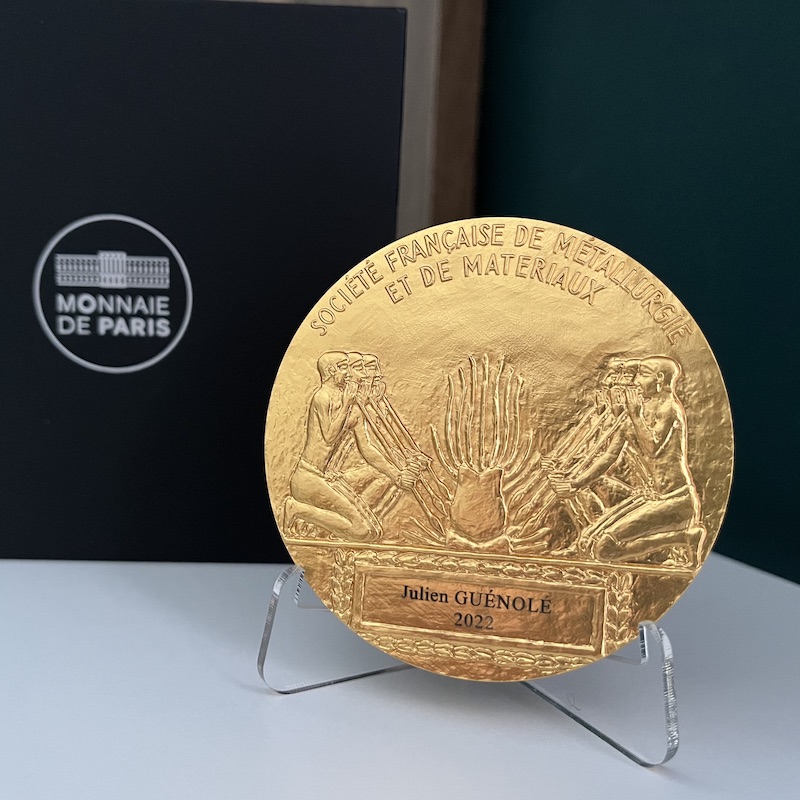 Outstanding Reviewer for Acta Materialia and Scripta Materialia (2023) [certificate].
Outstanding Reviewer for Acta Materialia and Scripta Materialia (2023) [certificate].- Jean Morlet prize 2022, awarded by the SF2M and supported by Aperam [news] [medal] [Article from "Factuel" 🇫🇷].
- Outstanding Reviewer for Acta Materialia (2016).
- Outstanding Reviewer for Materials & Design (2016).
- Best poster: Dislocation-precipitate interactions in superalloys at the ICM12 in Karlsruhe (2015), as co-author.
Reviewer for international peer-reviewed journals [non-exhaustive list on Publons]:
- Elsevier: Acta Materialia, Scripta Materialia, Materialia, Materials & Design, Applied Surface Science, Computational Materials Science, Journal of Manufacturing Processes, Journal of Magnesium and Alloys.
- NPG: Nature Communications.
- Taylor & Francis: Journal of Applied Statistics, Philosophical Magazine Letters.
- Springer: JOM, Journal of Materials Science.
- MDPI: Metals, Crystals, Micromachines. (Not reviewing for MDPI since 2022 as an answer to their editorial behavior)
Scientific Societies:
- Member of the Société Française de Métallurgie et de Matériaux (SF2M), since 2020.
- Secretary of the Lorraine local section of the Société Française de Physique (SFP), since 2021.
- Member of the Société Française de Physique (SFP), since 2010.
Former member of:
- Deutsche Gesellschaft für Materialkunde (DGM) 2018-2021.
- Member of the European Physical Society (EPS) 2017-2022.
- Member of the Deutsche Physikalische Gesellschaft (DPG) 2014-2024.
Teaching
| 2021 – | Lectures on Statics as Adjunct Lecturer, approx. 30h at the fall semester. Lectures on Statics: forces equilibrium, free body diagram, distributed forces and frictions. School of Mechanical Engineering, Georgia Tech-Lorraine, Metz, France. |
| 2018-2019 – | Lectures on Plasticity and atomistic simulations as Group leader, approx. 20h per semester. Lectures on Plasticity and atomistic simulations; Practical work on atomistic simulations and finite element modelling. RWTH Aachen University, Aachen, Germany. |
| 2014-2017 – | Lectures on atomistic simulations as Postdoctoral researcher, approx. 80h over four years. Lectures on atomistic simulations; Practical work; Practicum & PhD students supervising. Friedrich-Alexander-University Erlangen-Nürnberg – Elite Master's Programme MAP., Erlangen, Germany. |
| 2013 – | Teaching and research Assistant (ATER), 6 months, full time (96h). Practical work (TP) on optics; Supervised work (TD) on electromagnetic; Praktikum supervising. University of Poitiers – Institut Universitaire de Technologie (IUT), Poitiers, France. |
Education & diploma
| 2012 – | Doctoral degree in Material Physics, Pprime Institute, Department of Physics and Mechanics of Materials, University of Poitiers – CNRS – ISAE-ENSMA, France |
| 2011 – | School on parallel programming with Fortran/MPI, Organized by IDRIS, Poitiers, France |
| 2010 – | Training on the presentation of a scientific paper, Organized by the University of Poitiers, France |
| 2010 – | Summer school on the mechanics of Nano-Objects, Organized by CNRS, Autran, France |
| 2009 – | Master's degree in Sciences & Technologies, Specialty « Physics, Materials », University of Poitiers, France |
| 2006 – | Bachelor's degree in Sciences & Technologies, Specialty « Physics & Chemistry », University of Poitiers, France |
Dissemination activities & former responsibilities
| 2015 – | “Die Lange Nacht der Wissenschaften”, scientific dissemination by the laboratories and the companies of the city of Nürnberg and Erlangen, Germany |
| 2013 – | “Die Lange Nacht der Wissenschaften”, scientific dissemination by the laboratories and the companies of the city of Nürnberg and Erlangen, Germany |
| 2010-2012 – |
Elected member at the Laboratory Council of the Pprime Institute, Poitiers, France |
| 2011 – | “Fête de la science”, national event on Science dissemination, Poitiers, France |
| 2011 – | Contributor at a round table on the nanosciences and nanotechnologies, Annual Lions Club convention, Poitiers, France |
| 2010-2011 – | President of an association of graduate students (Master and PhD), the AESM, University of Poitiers, France |
| 2010 – | Member of scientific committee at the exhibition "Secrets of the nano-world", Poitiers, France |
| 2010 – | Participation in “Fête de la science”, french national event on Science dissemination, Poitiers, France |
| 2008 – | Scientific guide for the Exhibition "Physique and colors", Poitiers, France |

